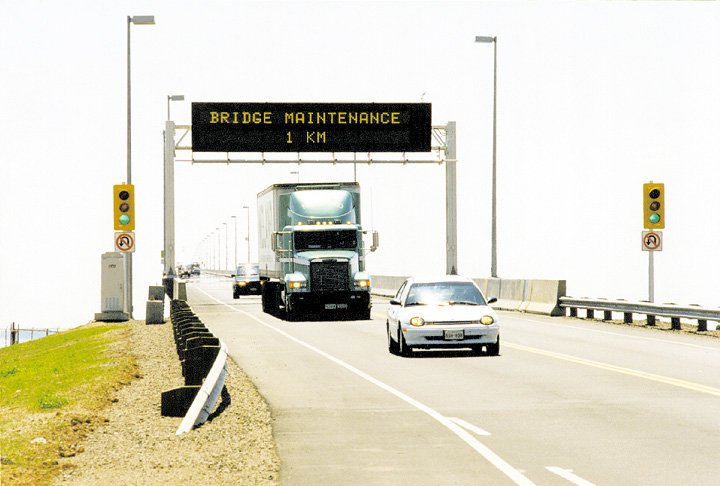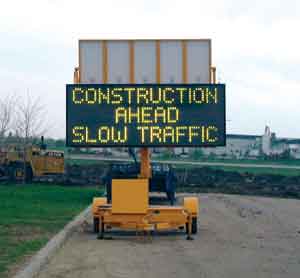
Road Network Operations
& Intelligent Transport Systems
A guide for practitioners!

Road Network Operations
& Intelligent Transport Systems
A guide for practitioners!
An effective interface with users is an essential part of many ITS applications. Users include control centre operators, the police and emergency services, road users and travellers. Many technologies support the dissemination of pre-trip and en-route information. To make traveller information available, historical and current traffic data and status of the network needs to be monitored and processed and put in a format which travellers can easily access (See Travel Information Systems).
Pre-trip traffic information provides travellers with information before they start their journeys. Examples of pre-trip traveller information include information on current or expected traffic conditions, current and expected weather conditions, and information on public transport schedules and fares. It is intended to help travellers to make informed route/mode/time of departure decisions (See Pre-trip Information).
En-route traffic information provides travellers with information while they are travelling. En-route traffic information includes many of the same elements provided for pre-trip planning – but updated in real-time – such as information on current and expected traffic and weather conditions, information on incidents and suggested diversion routes.
ITS uses many traffic information dissemination platforms to keep people informed about current as well as expected travel conditions. These include Dynamic Message Signs (DMS), Highway Advisory Radio (HAR), cable TV, traveller information websites and the Internet, dedicated phone systems, cellular telephone applications – and in-vehicle display. Information dissemination devices can be classified as:
With the proliferation of portable and mobile computing devices – such as smart phones and tablets – this three-way distinction is less clear now than it used to be. These are capable of accessing the Internet while the traveller is en-route – and there may be concerns about driver distraction and regulations against their use in certain circumstances (See Human Factors).
Dynamic Message Signs are also referred to as Variable Message Signs and Changeable Message Signs. In this website the following terminology is used:
A DMS may be either a Variable Message Sign (VMS) or Changeable Message Signs (CMS) where:
DMS are among the most common types of devices for information provision. They can either be fixed or portable as shown below. They can be text-based, graphics based or a combination of the two (See Traffic Management)


DMS can be used to provide travellers with instructions such as closed lanes or recommended speeds and information on traffic and weather conditions, incident locations and expected delays, construction work, alternative routes and speed advisories. Different types of DMS can be light-reflecting, light-emitting, and hybrid according to the technology used. Light emitting diodes (LEDs) are generally the preferred option where there is a power supply (including solar options).
As the name suggests, these rely on an external source of light, such as the sun, headlights, or overhead lighting, to make them visible – by reflecting the light source. Different types of light-reflecting signs include rotating drum and reflective disk matrix signs. Rotating plank/drum signs are made of one to four multi-faced drums, each containing two to six fixed text messages or graphics. The main application of rotating plank/drum technology when it is incorporated into a fixed direction sign – is to provide variable instructions, that are identical in appearance to the fixed sign face, to show an alternative direction to a destination.
Reflective disk matrix signs comprise an array of permanently magnetised, pivoted indicators that are black on one side, and reflective white or yellow on the other. When a specific pixel is activated, an electric current flips the indicator from the black finish to the reflective yellow finish.
Reflective disk matrix signs were popular in 1970s for freeway management systems because they were less costly than light-emitting signs. Mechanical failure of some or the entire message is common (disk failure). As LED signs become less costly the older technology is falling out of use.
These generate their own light on or behind the viewing surface – either in monochrome or full colour. Light emitting diode (LED) and fibre-optic DMS are two examples:
LED has become the preferred technology. New versions of LED DMS provide a display known as a full matrix that can display graphics and images.
Hybrid DMS combine the characteristics of both light-reflecting and light-emitting DMSs. One of the best examples of hybrid DMSs is the reflective disks/fibre-optic or LED DMS. During weather conditions when light-reflecting DMS are not clearly visible, these hybrid systems can use light-emitting technologies such as fibre-optics or LED. When the sun is shining, the light sources are turned off. Solid state LEDs are more reliable than reflective disks since there is no risk of mechanical failure.
In-road markers or lane lights (also known as intelligent road studs) can be used to convey important messages to drivers, in addition to their most direct function of lighting the way at night. For example, in-road markers can be used to communicate the right usage of a lane. Intelligent road studs have been used for signing the use of the hard shoulder during periods of heavy congestion, hazard warnings and operation of part-time bus lanes
These devices are typically located inside the vehicle and, similar to DMS, are designed to provide information to drivers while en-route. In-vehicle information devices can provide information by either audio or visual means. Examples of auditory in-vehicle information devices include highway advisory radio (HAR), cellular phone hotlines and commercial radio. Examples of visual in-vehicle devices include video display devices and head-up displays (which drivers can read without altering their normal viewing position
Highway advisory radio (HAR) provides another means for disseminating information to drivers while en-route. Typically, information is provided through an AM receiver. Drivers are informed about the existence of an HAR signal by signs which are typically installed upstream of the signal, advising drivers to tune in to a specific frequency (typically either 530 kHz or 1610 kHz) (See Radio).
HAR can be used to provide travellers with information similar to that provided by VMS. One advantage of HAR compared to VMS is that it is less distracting – since information is provided through a different sensory channel (audio) which reduces visual information overload. More complex messages are also possible with HAR compared to DMS. The disadvantage is that users have to tune to the frequency themselves.
Another way of providing information to drivers en-route, – which has increased in popularity with the widespread use of cellular phones – involves establishing a “hotline” phone system for traffic information that drivers can call from their cell phones while en-route (such as the 511 system in the US). The phone systems typically include a touch-tone menu that allows callers to receive route-specific traffic information – this gives the driver control over the type of information received.
Commercial radio is another means of providing en-route traveller information. The primary disadvantage of commercial radio is the accuracy and timeliness of the information. Typically, information is broadcast only when normal scheduling permits – and in many cases, this may be inappropriate since an incident might have been cleared by the time normal scheduling permits broadcasting.
A recent approach to disseminating traffic information en-route involves the use of dashboard displays, video and head-up display terminals. Close attention to the design of the Human-Machine Interface is needed to minimise driver distraction (See Human Factors).
These technologies are widely used for pre-trip and off-roadway information dissemination. They include cable TV, phone systems, the internet, pagers, smart phones and tablet computers. Many metropolitan areas around the globe now have websites dedicated to traveller information. These systems provide travellers with a wealth of travel-related information, including current travel conditions, alerts, and other timely information. A traffic map showing current speeds, locations of any incidents or construction zones typically form a central part of these websites. Among the technologies used for off-road roadway information dissemination are dynamic public information displays and kiosks – and mobile devices.
Large shopping malls and motorways often have dynamic information displays and kiosks where real-time travel conditions may be provided. This is also true of many motorway rest areas. These displays and kiosks were very helpful before widespread public take-up of mobile computing devices and smart phones. With the advent of these technologies, public information displays and kiosks have played a secondary role in information dissemination. They are still available at many sites and are useful for those sectors of the population who do not have access to mobile computing and smart phones.
The high market penetration of smart phones, tablet computers and personal navigation devices has provided the transport industry with an invaluable tool for disseminating travel information. The unique advantage of these nomadic and mobile devices is that they make travel information available to travellers on a continuous and uninterrupted basis.
Many navigational devices and services include real-time information about the transport network conditions. This is demonstrated by services such as Google maps and navigation – as well as by GPS navigation devices that can receive real-time traffic condition information. Crowd-sourcing is also being used to collect and disseminate travel information.